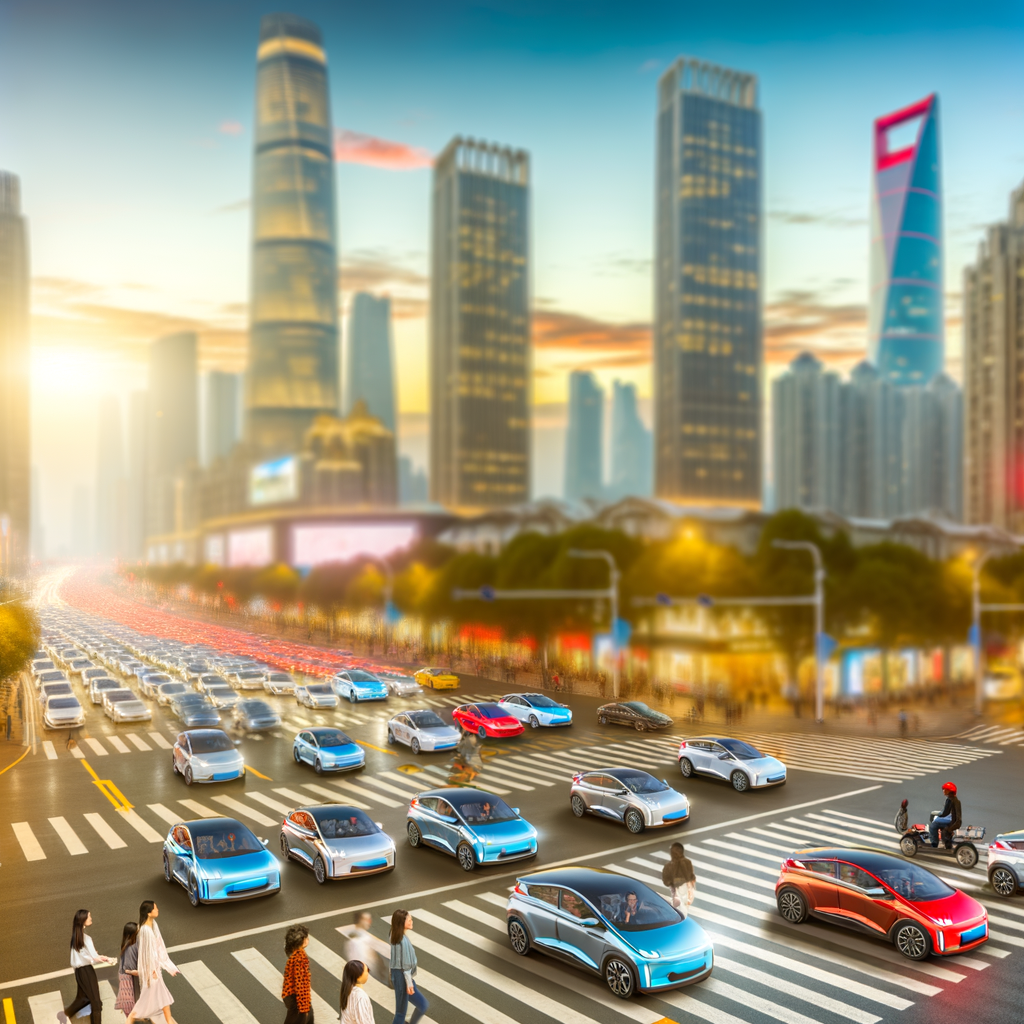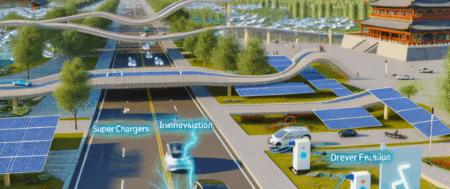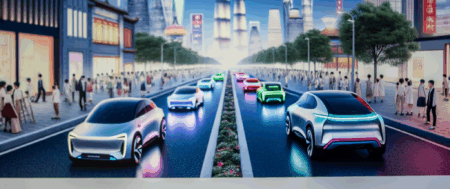China’s ascent to the top of the Largest Automotive Market is fueled by its growing economy, urbanization, and an emphasis on Electric Vehicles (EVs) and New Energy Vehicles (NEVs). The nation’s unique regulatory landscape and significant government incentives, coupled with shifting consumer preferences towards eco-friendly and tech-savvy vehicles, have spurred demand for both domestic car brands and foreign automakers. These international companies often enter joint ventures with local firms to better navigate the complex market. China’s dedication to cutting carbon emissions and its focus on strategic partnerships have made it a frontrunner in shaping the future of mobility. As the market competition intensifies, driven by technological advancements and environmental concerns, succeeding in this dynamic market requires a thorough understanding of regulatory policies, consumer trends, and the ability to establish effective domestic and international collaborations. China’s push for EVs and NEVs is leading the global automotive industry into a new era, underscoring the critical role of strategic partnerships, and addressing consumer preferences and environmental challenges in this evolving landscape.
In the heart of an ever-evolving global landscape, where technological advancements and environmental concerns are steering the future, lies the burgeoning behemoth of the automotive industry—China. Holding the title of the Largest Automotive Market, China’s automotive sector is a vibrant ecosystem of domestic car brands and foreign automakers, all vying for dominance in a territory marked by its growing economy, rapid urbanization, and a middle class with an insatiable appetite for mobility. This dynamic market is not just about traditional vehicles anymore; it’s at the forefront of a monumental shift towards Electric Vehicles (EVs) and New Energy Vehicles (NEVs), driven by robust government incentives and a collective push for sustainability.
As foreign automakers and domestic giants form strategic partnerships through joint ventures, they navigate the complex regulatory landscape that defines China’s automotive realm. These collaborations are essential for tapping into China’s vast consumer base, which is increasingly leaning towards EVs and NEVs amidst rising environmental concerns. The competition is fierce, and success in this market is not guaranteed. It requires a nuanced understanding of consumer preferences, market trends, and the ability to leverage technological advancements.
This article, “Driving the Future: Navigating the Complexities of China’s Position as the World’s Largest Automotive Market Amidst Growing Economy, Urbanization, and Shift Towards Electric Vehicles (EVs) and New Energy Vehicles (NEVs),” dives deep into the heart of China’s automotive industry. It explores how the confluence of government incentives, strategic partnerships, and the relentless pursuit of innovation are shaping a market that’s not just leading but redefining the global automotive landscape. Join us as we explore the intricacies of market competition, the significance of joint ventures, and the pivotal role of consumer preferences in driving forward the world’s largest automotive market.
“Driving the Future: Navigating the Complexities of China’s Position as the World’s Largest Automotive Market Amidst Growing Economy, Urbanization, and Shift Towards Electric Vehicles (EVs) and New Energy Vehicles (NEVs)”

China’s ascent to the top of the global automotive industry is a testament to its rapidly growing economy, increasing urbanization, and the strategic shift towards Electric Vehicles (EVs) and New Energy Vehicles (NEVs). As the Largest Automotive Market in the world, China is not just a hub for car production and sales but also a pivotal player setting the pace for the future of mobility. The market’s dynamism is fueled by a mix of consumer preferences, technological advancements, and a unique regulatory landscape that both challenges and offers unprecedented opportunities for automakers.
The burgeoning middle class in China, coupled with environmental concerns, has led to a significant demand for both domestic car brands and foreign automakers. This surge is particularly evident in the EV and NEV sectors, which have been growing due to robust government incentives aimed at reducing carbon emissions and combating pollution. These incentives, alongside the market’s sheer size and potential, make China an attractive yet complex battlefield for automotive companies.
Navigating this landscape requires a deep understanding of the regulatory framework that governs the automotive industry in China. Foreign automakers often enter into joint ventures with local Chinese companies, a strategic partnership that offers mutual benefits: foreign brands gain access to the vast Chinese market, while domestic companies leverage the technological expertise and international appeal of their partners. These collaborations are essential for success in a market where consumer preferences can shift quickly and are increasingly leaning towards technologically advanced, environmentally friendly vehicles.
The competition in China’s automotive market is fierce and multifaceted, reflecting the broader trends in global economic movements, technological innovation, and shifts towards sustainable mobility. The race to dominate the EV and NEV segments is particularly intense, with companies vying to offer the most efficient, reliable, and affordable models to an environmentally conscious consumer base.
Moreover, the strategic partnerships between domestic and international players, combined with government policies aimed at promoting EVs and NEVs, underscore the market’s potential for growth and transformation. However, these same factors also introduce a level of complexity and volatility, as companies must continually adapt to new regulations, changing consumer demands, and the pace of technological advancements.
In conclusion, China’s position as the world’s Largest Automotive Market is driving the future of the automotive industry, with a significant push towards electric and new energy vehicles. Success in this lucrative but challenging market requires a nuanced approach that combines an understanding of the regulatory landscape, strategic partnerships, and an ability to anticipate and meet consumer preferences and environmental concerns. As urbanization and the growing economy fuel demand, the market’s evolution will undoubtedly influence global automotive trends, making China a key player in shaping the future of mobility.
In conclusion, the journey through the vibrant and expansive terrain of China’s automotive sector underscores its status as the top and Largest Automotive Market in the world. This landscape is powered by a combination of a growing economy, rapid urbanization, and a decisive pivot towards Electric Vehicles (EVs) and New Energy Vehicles (NEVs), all of which are reshaping the future of mobility within the nation. The allure of this market is undeniable, drawing in both domestic car brands and foreign automakers, the latter often entering into joint ventures as a strategic maneuver to navigate the complex regulatory landscape and tap into the vast consumer base.
China’s automotive market thrives on a rich tapestry of government incentives aimed at fostering the growth of EVs and NEVs, responding to mounting environmental concerns. This, coupled with the evolving consumer preferences and technological advancements, sets a dynamic stage for market competition. The strategic partnerships formed between global and local players underscore the collaborative spirit necessary to thrive within this competitive environment.
Understanding China’s automotive market demands a nuanced appreciation of the interplay between government policies, market trends, consumer behavior, and technological innovation. For companies looking to enter or expand within this market, success hinges on their ability to adapt to these factors, aligning their strategies with the unique characteristics that define China’s automotive landscape.
As we look to the future, it’s clear that the China automotive market will continue to be a beacon for innovation, growth, and transformation. The focus on electric and new energy vehicles positions the market as a leader in the global shift towards sustainable transportation. For industry players, the opportunities are vast but come with the challenge of continuous adaptation to remain relevant and successful in this ever-evolving market.






